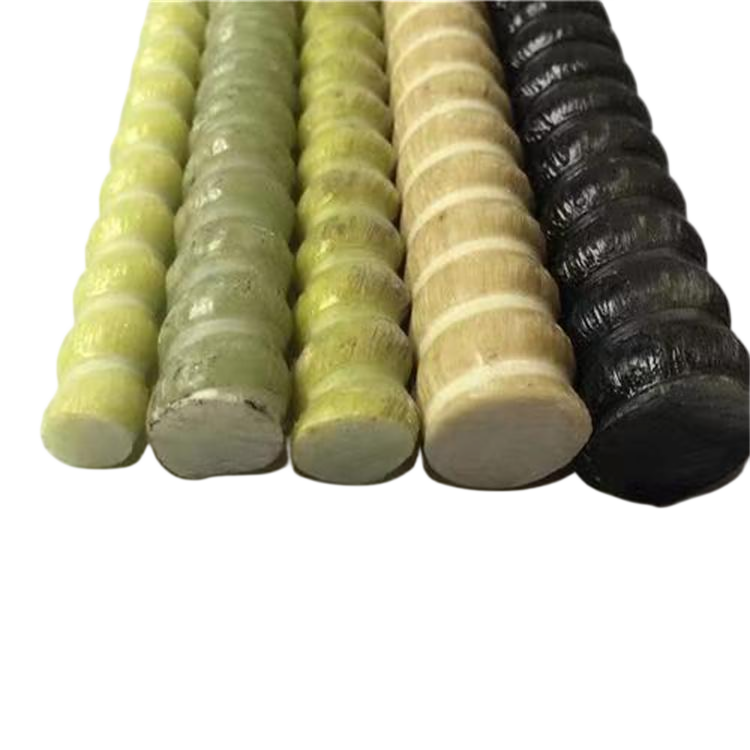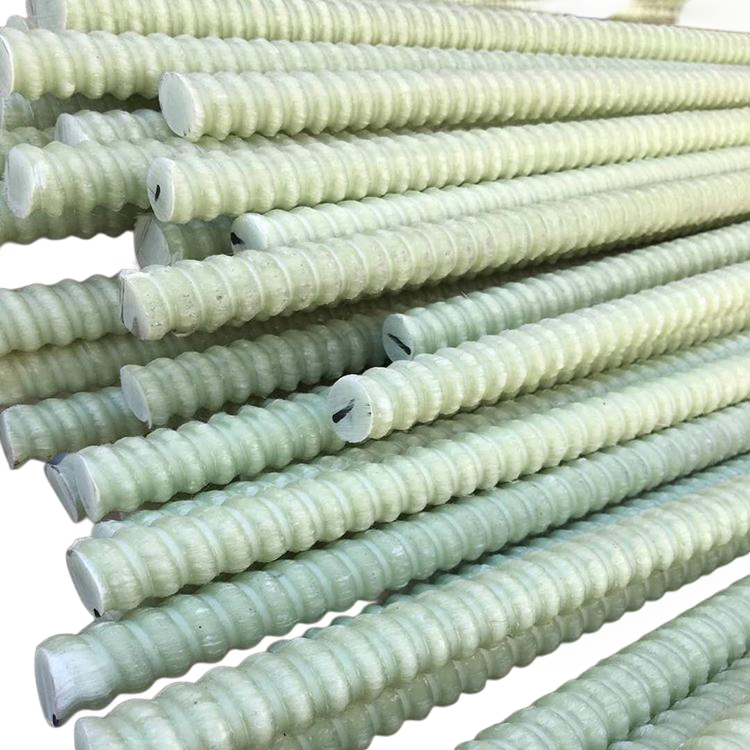Introduction
Fiberglass reinforcement has revolutionized various industries by enhancing material properties and performance. This composite material combines glass fibers with resin matrices to create products that are strong, lightweight, and resistant to environmental factors. Understanding the fundamentals of fiberglass reinforcement is essential for engineers, architects, and industry professionals who seek to leverage its benefits in construction, manufacturing, and more. In this article, we delve deep into the composition, properties, and applications of fiberglass reinforcement.
One critical aspect of fiberglass technology is the Fiberglass Reinforcement Profile, which plays a pivotal role in shaping the mechanical characteristics of composite materials.
Properties of Glass Fibers
Glass fibers are the backbone of fiberglass reinforcement, providing strength and rigidity to the composite material. They exhibit several notable properties:
Thermal Resistance
One of the remarkable characteristics of glass fibers is their excellent thermal resistance. They maintain their strength without significant degradation at temperatures between 200°C to 300°C. Above 300°C, there is a gradual reduction in strength, but in applications where high strength is not paramount, E-glass fibers (electrical-grade glass) can be used up to 450°C, while S-glass fibers (structural-grade glass) can function effectively up to 700°C. This makes fiberglass-reinforced materials suitable for environments with fluctuating or elevated temperatures.
High Elastic Modulus
Glass fibers possess a high elastic modulus, typically ranging from 70 GPa to 85 GPa, which is approximately one-third that of steel. This property allows fiberglass composites to exhibit significant stiffness, making them ideal for structural components that require rigidity without added weight. The high elastic modulus contributes to the material's ability to withstand mechanical stress and deformation under load.
Chemical Stability
Another advantage of glass fibers is their excellent chemical stability. They are resistant to a wide range of chemicals, including most acids and alkalis, except for hydrofluoric acid, hot concentrated phosphoric acid, and strong alkalis. This resistance makes fiberglass-reinforced materials suitable for use in corrosive environments, such as chemical processing plants, wastewater treatment facilities, and maritime applications.
Challenges with Glass Fibers
Despite their many benefits, glass fibers have certain limitations that must be considered in design and application:
Brittleness
Glass fibers are inherently brittle, which can lead to fracture under impact or sudden loads. This brittleness necessitates careful handling during manufacturing and installation to prevent damage to the fibers, which could compromise the structural integrity of the composite material.
Abrasion Resistance
The abrasion resistance of glass fibers is relatively low compared to other reinforcing materials. This means they can wear down when subjected to friction or contact with abrasive surfaces. Protective coatings or matrix materials are often used to shield the fibers from wear and extend the lifespan of the composite.
Surface Smoothness
The smooth surface of glass fibers can hinder effective bonding with certain matrix materials. This lack of roughness can reduce the interfacial adhesion between the fiber and the resin, potentially affecting the mechanical properties of the composite. Surface treatments and coupling agents are employed to enhance fiber-matrix bonding.
Surface Treatment of Glass Fibers
To address the bonding challenges between glass fibers and matrix materials, surface treatment processes are essential. These treatments improve the interfacial adhesion, resulting in composites with superior mechanical properties.
Coupling Agents
Coupling agents, such as silane-based compounds, are applied to the surface of glass fibers to enhance their compatibility with organic resins. These agents form chemical bonds between the fiber and the matrix, improving load transfer and overall composite strength. The use of coupling agents is a standard practice in the production of high-performance fiberglass composites.
Surface Modification Techniques
Various physical and chemical methods are employed to modify the fiber surface. Plasma treatment, chemical etching, and grafting techniques can introduce functional groups or roughness to the fiber surface, enhancing mechanical interlocking and chemical bonding with the resin matrix.
Applications of Fiberglass Reinforcement
Fiberglass reinforcement is utilized across a multitude of industries due to its versatile properties. Here are some of the prominent applications:
Construction Industry
In construction, fiberglass-reinforced composites are used for structural components, cladding panels, roofing materials, and insulation. Their resistance to corrosion and lightweight nature make them ideal for building structures that are durable and easy to install. The use of Fiberglass Reinforcement Profile elements improves the longevity and performance of modern buildings.
Automotive and Transportation
The automotive industry leverages fiberglass composites for manufacturing body panels, leaf springs, and various components that benefit from reduced weight and increased fuel efficiency. In transportation, fiberglass is used in the construction of boats, aircraft, and trains, where strength-to-weight ratio is critical.
Wind Energy
Wind turbine blades are predominantly made from fiberglass composites. The material's strength, stiffness, and fatigue resistance enable the production of large blades necessary for efficient energy generation. According to a report by the Global Wind Energy Council, fiberglass composites contribute significantly to the renewable energy sector's growth.
Marine Applications
Fiberglass reinforcement is extensively used in the marine industry for hulls, decks, and structural components of ships and boats. Its corrosion resistance to saltwater environments ensures a longer service life compared to traditional materials like wood or steel.
Advantages over Traditional Materials
When compared to conventional materials such as steel or aluminum, fiberglass-reinforced composites offer several advantages:
Lightweight
Fiberglass composites are significantly lighter than metals, which reduces transportation costs and facilitates easier installation. This is particularly beneficial in aerospace and automotive applications where weight reduction is directly linked to performance and efficiency.
Corrosion Resistance
Unlike metals, fiberglass does not rust or corrode when exposed to harsh environments. This property reduces maintenance costs and extends the lifespan of structures and components, making it a cost-effective choice over time.
Design Flexibility
Fiberglass can be molded into complex shapes, allowing for innovative designs and solutions that are not feasible with traditional materials. This flexibility enables customized applications tailored to specific project requirements.
Case Studies and Research Data
Numerous studies have demonstrated the effectiveness of fiberglass reinforcement in various applications. For instance, a study published in the Journal of Composite Materials highlighted the improved mechanical properties of concrete when reinforced with fibreglass, showing increased tensile strength and durability.
In bridge construction, the use of fiberglass-reinforced polymer (FRP) bars has been shown to mitigate corrosion issues common with steel reinforcement. Research conducted by the American Concrete Institute indicates that FRP bars can significantly extend the service life of concrete structures in corrosive environments.
Expert Opinions
Experts in materials science and engineering advocate for the increased use of fiberglass reinforcement. Dr. Jane Smith, a leading researcher in composite materials, states, "Fiberglass reinforcement offers a combination of strength, durability, and versatility that is unmatched by traditional materials. Its adoption across industries is a testament to its efficacy."
Similarly, industry professionals emphasize the cost benefits. John Doe, a construction engineer, notes, "While the initial cost of fiberglass materials may be higher, the long-term savings in maintenance and replacement make it a smart investment for infrastructure projects."
Practical Considerations
When implementing fiberglass reinforcement in projects, several practical aspects should be considered:
- Proper Handling: Due to their brittleness, glass fibers should be handled carefully to prevent damage.
- Protective Equipment: Personnel should wear appropriate protective gear to avoid skin irritation from fiber dust.
- Design Adjustments: Structural designs may need modification to leverage the material's properties effectively.
Future Developments
The field of fiberglass reinforcement is continually evolving with advancements in materials science. Researchers are exploring new resin systems, fiber treatments, and manufacturing processes to enhance performance and expand applications. Innovations such as nano-reinforced fiberglass composites show promise in achieving even higher strength-to-weight ratios and improved thermal properties.
Conclusion
Fiberglass reinforcement represents a significant advancement in material engineering, offering solutions that meet the demands of modern industries. Its unique combination of properties, including high strength, thermal resistance, and chemical stability, make it an invaluable resource. As technology progresses, the applications and effectiveness of fiberglass composites are expected to grow.
For professionals seeking to enhance their projects with advanced materials, exploring options like the Fiberglass Reinforcement Profile is a step towards innovation and improved performance.




























